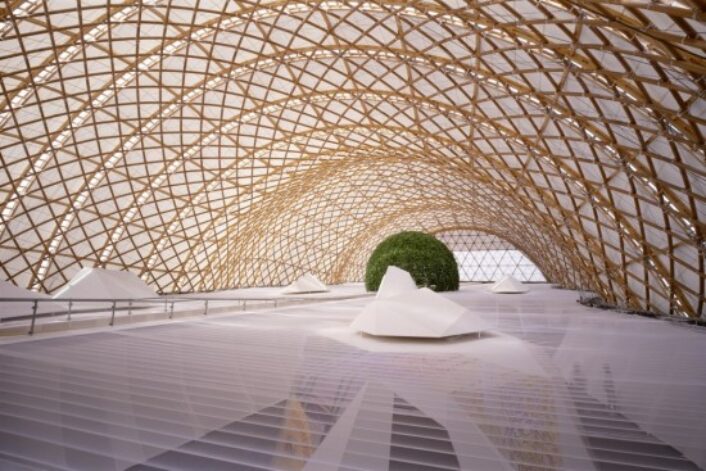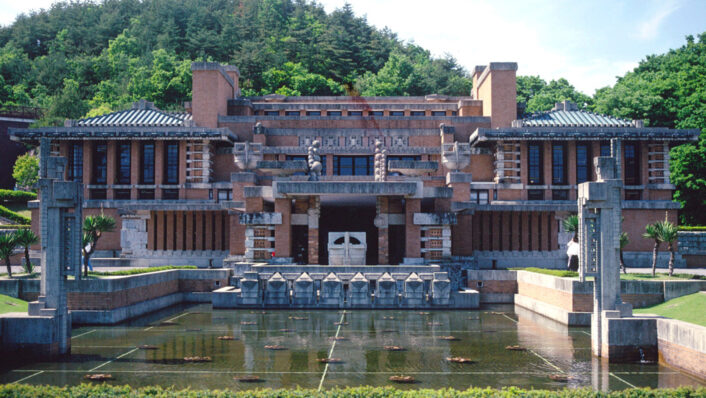Ban speaking about the Mount Fuji World Heritage Center.
Architecture
Mount Fuji Heritage Center
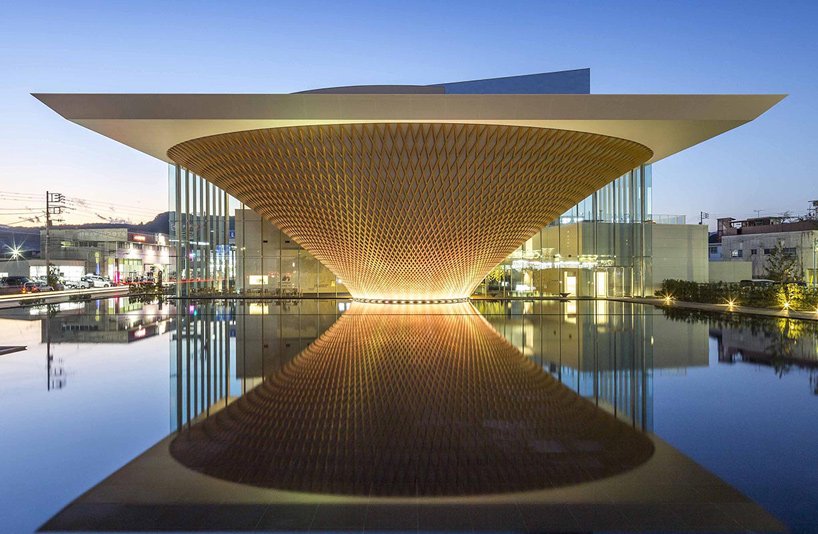
The design was selected from 238 competing proposals.
Image courtesy of Design Boom
In 2017, the Mount Fuji World Heritage Center opened in the city of Fujinomiya. This museum and heritage center was built to present the vast significance of nearby Mount Fuji. The 12,388-foot-mountain is both a popular travel destination and pilgrimage locale, as well as a recurring subject in Japanese art. Mount Fuji was declared by UNESCO a World Heritage Site in 2013.
The building, designed by the Japanese architect Shigeru Ban, is shaped like an inverted mountain. It couldn’t be more fitting!
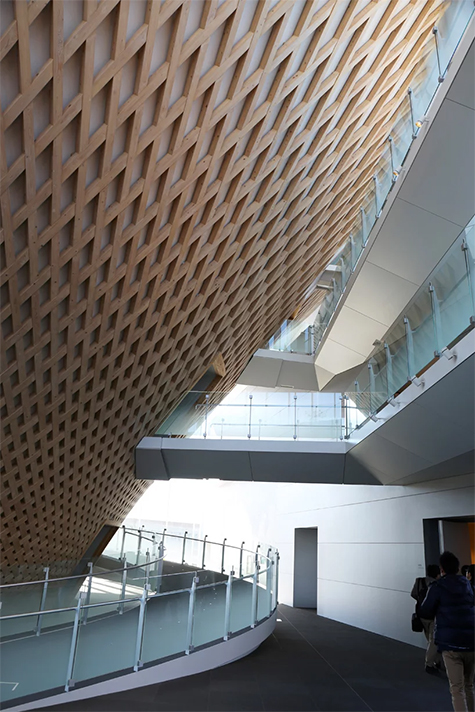
The Exhibition Building’s ramp leads through five floors of exhibits.
Image courtesy of Design Boom
The space consists of three separate buildings- the West Building, the North Building, and the Exhibition Building. Of the three, the Exhibition Building is the most iconic. Designed as an inverted image of Mount Fuji, the volume and mass of the structure is turned upside down. This is then reflected in a large pool, similar to how the mountain mirrors the sea.
Further adding to the symbolism, the construction is clad with a wood lattice made from the mountain’s cypresses. The side wings hold a cafe, library, and visitor’s shop. At the center is the exhibition space which has a 633-foot-long ascending path meant to mimic the physical and emotional experience of climbing an actual volcano.
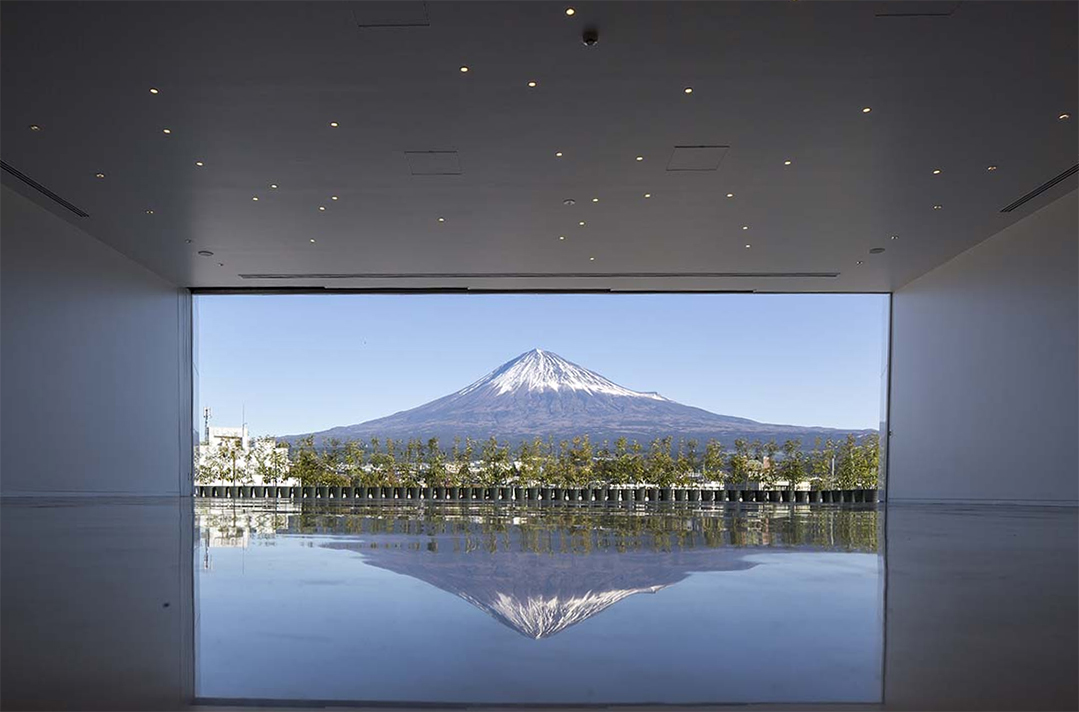
It is imperative that visitors take time to study the mountain reflected in the pristine pool outside the center .
Image courtesy of: Arcitectzer
As you walk up the ramp inside the Exhibition Building, the presentations represent a 35,000-year-long relationship between Mount Fuji and humans, the natural and geologic landscape of the mountain and its surroundings, its fauna and flora, and how it has been presented in art.
The space also includes a beautifully detailed movie theater which shows two documentaries on the mountain. These movies share the importance of Mount Fuji to the Japanese people.
Each one of the five floors tells a different story. For example the 5th floor, “The Fierce Mountain”, speaks of the relationship between Mount Fuji and humans, and the 4th floor, “The Sacred Mountain”, tells of the spiritual beliefs related to Mount Fuji.
It was important that visitors also learn about the area surrounding Mount Fuji. As such, the 3rd floor’s exhibit, “The Nurturing Mountain”, introduces the natural ecosystem which stretches from the mountain region to Suruga Bay.

The beautifully intricate lattice design from the Exhibition Building.
Image courtesy of: Design Boom
About his winning design, Ban said, “Besides me, everyone [who submitted competition proposals] designed a roof resembling the Fuji mountain — but I thought it’s impossible to compete with the Fuji mountain in front. So I did it the other way around. Inside, there is this kind of experience where you climb up the Fuji mountain. Along a slope, we have a very beautiful light projection of the mountain. while you’re climbing up, you can see the beautiful images of the different heights of the Fuji mountain when you climb it. At the end of the slope, on the top floor, there is a penthouse with a sort of ‘picture window’ that frames the real Fuji mountain.”
